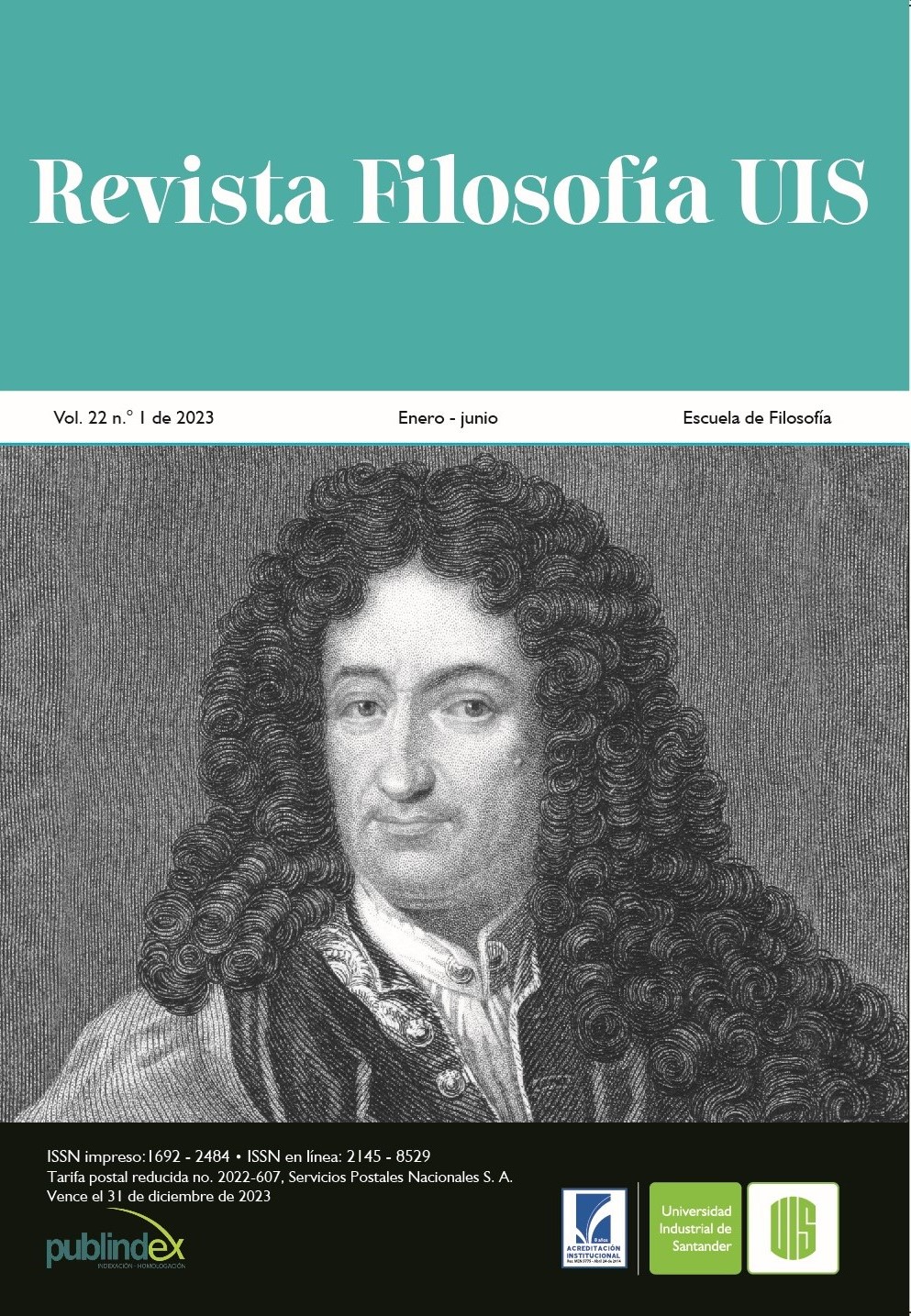Sinequism and Evolutionary Teleology as Constituents of Charles Sanders Peirce's Realist Proposal Against Nominalism
Published 2023-01-02
Keywords
- Nominalism,
- Pragmaticism,
- Realism,
- Sinequism,
- Evolutionary Teleology
How to Cite
Copyright (c) 2023 Revista Filosofía UIS

This work is licensed under a Creative Commons Attribution 4.0 International License.
Abstract
The purpose of this paper is to clarify the meaning of the realism subscribed by Charles Sanders Peirce from his pragmaticism. Since this realism has its basis in Peircean approaches concerning the logic of research and his metaphysical proposal, the first objective is to place it in the framework of the discussion around different epistemological and ontological realist proposals. Based on this, in a second moment, I will specify the realist proposal that emerges from his doctrine of continuity or sinequism. Finally, the general features of the evolutionary teleology in which this proposal ends will be presented.
Downloads
References
- Flórez, J. A. y Acosta López de Mesa, J. (2022). Peirce's Open Community in Light of Sentimentalism and Normative Sciences. Estudios De Filosofía, (65), 177-192. https://doi.org/10.17533/udea.ef.347278
- Flórez, J. A. y Arias Cardona, J. (2022). La Idea de Continuidad en las filosofías de Leibniz y Peirce. Pensamiento. Revista de Investigación e Información Filosófica, 78(298), 841-861. https://doi.org/10.14422/pen.v78.i298.y2022.030
- Forster, P. (2013). Peirce and the Threat of Nominalism. Cambridge University Press.
- Hausman, C. R. (1997). Charles S. Peirce's Evolutionary Philosophy. Cambridge University Press.
- Havenel, J. (2008). Peirce's Clarifications of Continuity. Transactions of the Charles S Peirce Society, 44(1), 86-133.
- Hernández, C. y Garzón, C. (2009). C. S. Peirce: realidad, verdad y el debate realismo-antirrealismo. Studium. Filosofía Y Teología, 12(23), 57-72. https://revistas.unsta.edu.ar/index.php/Studium/article/view/619
- McNabb, D. (2018). Hombre, Signo y Cosmos. La filosofía de Charles S. Peirce. Fondo de Cultura Económica.
- Nubiola, J. (2016). La razonabilidad de C. S. Peirce. En C. Hynes y J. Nubiola (Eds.), Charles S. Peirce. Ciencia, filosofía y verdad (pp. 23-32). La Monteagudo.
- Peirce, C. S. (1871). Las obras de Berkeley, de Fraser. Recuperado de: https://www.unav.es/gep/ObrasBerkel.html
- Peirce, C. S. (1877). La fijación de la creencia. Recuperado de https://www.unav.es/gep/FixationBelief.html
- Peirce, C. S. (1884). Designio y azar. Recuperado de: https://www.unav.es/gep/DesignAndChance.html
- Peirce, C. S. (1885). Un Platón americano: Reseña del aspecto religioso de la filosofía de Royce. Recuperado de: https://www.unav.es/gep/AmericanPlato.html
- Peirce, C. S. (1891). La arquitectura de las teorías. Recuperado de: https://www.unav.es/gep/ArquitecturaTeorias.html
- Peirce, C. S. (1892). La ley de la mente. Recuperado de: https://www.unav.es/gep/LawMind.html
- Peirce, C. S. (1893). La inmortalidad a la luz del Sinejismo. Recuperado de https://www.unav.es/gep/ImmortalityInLightSynechism.html
- Peirce, C. S. (1903). Los tres géneros de bondad. Recuperado de: https://www.unav.es/gep/HarvardLecturesPragmatism/HarvardLecturesPragmatism5.html
- Peirce, C. S. (1906). La base del pragmaticismo en las ciencias normativas. Recuperado de: https://www.unav.es/gep/BasePragmaticismoCienciasNormativas.html
- Peirce, C. S. (1907). Pragmatismo. Recuperado de: https://www.unav.es/gep/PragmatismoPeirce.html
- Peirce, C. S. (2012). Obra Filosófica Reunida, Tomo I (1867-1893). En N. Houser y C. Kloesel (Eds.). Fondo de Cultura Económica.
- Potter, V. y Shields, P. (1977). Peirce's Definition of the Continuity. Transactions of the Charles S Peirce Society, 13(1), 20-34.
- Rorty, R. (2010). La filosofía y el espejo de la naturaleza. Ediciones Cátedra.
- Torres, E. (2009). Idealismo epistemológico y realismo metafísico en Charles S. Peirce. Cuadernos de Sistemática Peirceana, 1, 181-213.
- Zalamea, F. (2012). Peirce’s Logic of Continuity. A Conceptual and Mathematical Approach to the Continuum and the Existential Graphs. Docent Press.

